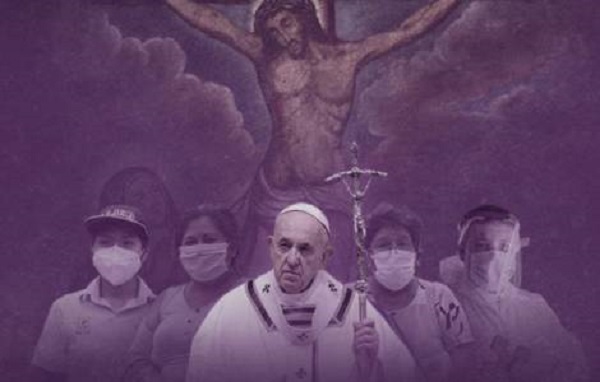For the second time in the 333-year history of this major religious event, the traditional procession of the Señor de los Milagros («The Lord of Miracles») in Peru, the largest of its kind in all of Latin America with almost 2 million people, will not take place this year due to the pandemic, reported Fides News Agency.
Last Saturday, October 3, the date of the first of the five traditional days during which the icon of the Lord of Miracles is carried through the streets of the Peruvian capital during the month of October, many believers waited in the streets, hoping to see the icon. The only similar precedent dates back to 1882 when the traditional processions did not take place due to the Chilean occupation of Lima during the Pacific War (1879-1884).
In other cities of Peru, where it is also a tradition to hold similar processions, such as in Arequipa, the Country’s second-largest city, the icon of the so-called «Cristo de Pachacamilla» will not be seen.
In a letter published by the Archdiocese of Lima, Pope Francis expressed his solidarity with the Catholics of the Archdiocese, emphasizing: «This year the procession will not be able to take place in the streets, but this does not prevent the Lord from performing miracles and reach thousands of hearts». «I am moved by the thought of the harsh trials that many of our brothers and sisters are facing due to the virus that affects not only their health but also their lives and multiplies the injustices, suffering, and misunderstandings that undermine their personal dignity», said Pope Francis. The Archbishopric of Lima and the Confraternity of the Lord of Miracles will broadcast the sermons on the five designated days of October and the footage of the processions of recent years, and some celebrations with Archbishop Carlos Castillo of Lima on the occasion on social networks.
The processions of the “Señor de los Milagros” began in 1687, when the image, painted in fresco on the walls of a hermitage, remained intact after a violent earthquake (a similar episode had already happened in 1655). The picture shows a black crucified Christ, which was first painted in Lima in the 17th century by a black African slave. The picture is currently in the Las Narenas shrine in the historic old town of Lima. It is the picture that the Spanish sailor and merchant Sebastián de Antuñano commissioned after the earthquake of 1687 to have it venerated on the streets of the Peruvian capital every October.



